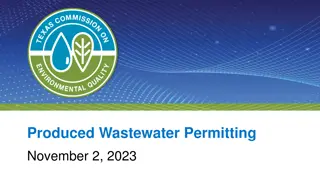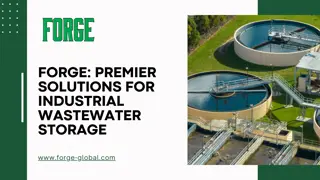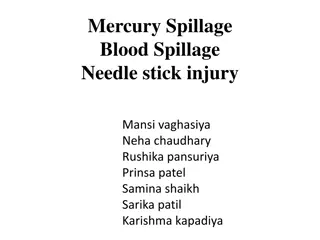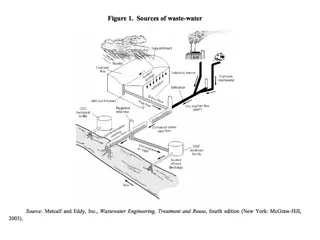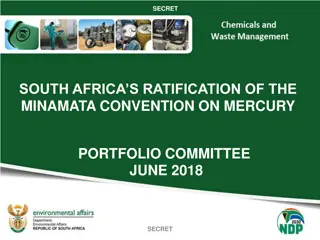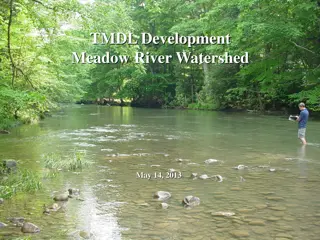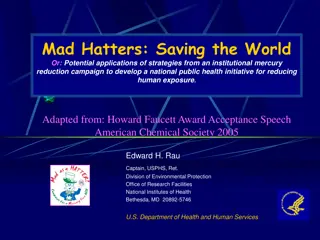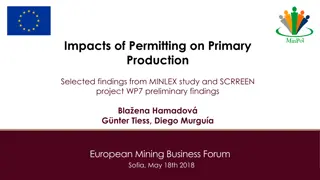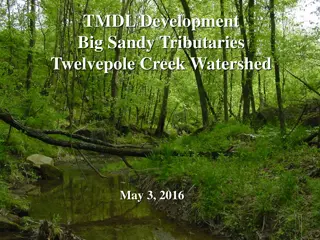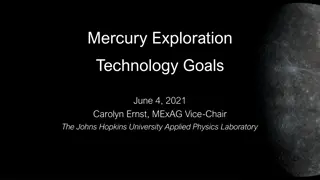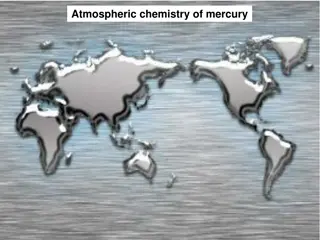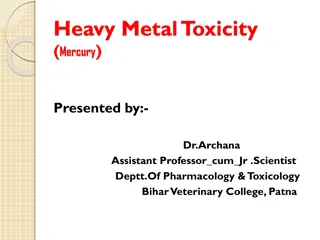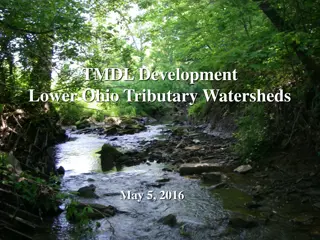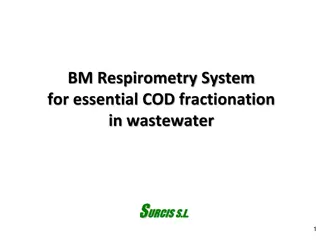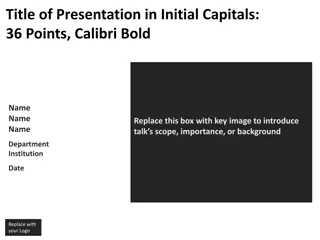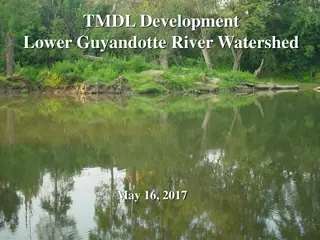Statewide Mercury TMDL & Wastewater Permitting Strategy Overview
Statewide Mercury Total Maximum Daily Load (TMDL) program implemented in North Carolina has aimed at a 67% reduction in total mercury loading since 2002. The Wastewater Permitting Strategy has successfully resulted in a 99% compliance rate among facilities, ensuring low mercury contributions. Monitoring, reporting, and strategic guidelines have been instrumental in achieving these milestones.
Download Presentation

Please find below an Image/Link to download the presentation.
The content on the website is provided AS IS for your information and personal use only. It may not be sold, licensed, or shared on other websites without obtaining consent from the author.If you encounter any issues during the download, it is possible that the publisher has removed the file from their server.
You are allowed to download the files provided on this website for personal or commercial use, subject to the condition that they are used lawfully. All files are the property of their respective owners.
The content on the website is provided AS IS for your information and personal use only. It may not be sold, licensed, or shared on other websites without obtaining consent from the author.
E N D
Presentation Transcript
Request for Approval: Statewide Mercury TMDL & Wastewater Permitting Strategy Kathy Stecker, Division of Water Quality
Outline Overview History and context TMDL purpose and results Permitting strategy Decision chart Comments received Responses to comments Recommendation
Overview Statewide mercury TMDL 2002 = baseline year 67% reduction in total mercury loading needed Wastewater sources have met reduction NC air sources expected to meet by 2016 Wastewater Permitting Strategy Today, 99% of facilities comply
History and Context Atmospheric deposition believed to be largest mercury source Best approach regional or national Would have required EPA initiation Other states with statewide mercury TMDLs so far MN, ME, NH*, VT, MA, RI, CT, NY, NJ FL, MI -- in draft, to be completed in 2012 AL, MO -- in progress Only NH had listed all waters as impaired
History and Context Long history monitoring mercury in fish tissue Clean Smokestacks Act 2002, SL 2002-4 DAQ mercury emissions reports 2003, 2004, 2005 15A NCAC 02D Section .2500 - 2007 Reports to EMC 2008, 2012, 2018, 2023 Clean Water Act 319(g) conference 2010 NC statewide mercury TMDL 2012
NC Statewide Mercury TMDL Atmospheric deposition = 98%, wastewater = 2% In-state air 16%, out-of-state air 84% Provides baseline to document reductions Informs further action Consistent with 15A NCAC 02D .2509(b)(3) mercury balance for North Carolina, including imported, exported, & in-state mercury emissions & the fate & transport of mercury in the air & waters of the State
NC Statewide Mercury TMDL 67% reduction in total mercury loading needed Do our part 67% NC reduction 12% reduction overall loading to NC Expect to achieve by 2016 Allows reasonable approach to NPDES permitting TMDL = 81 lbs/yr wastewater + 3948 lbs/yr air
Wastewater Permitting Strategy Mercury in NC wastewater reduced significantly since baseline Today, 99% of facilities comply TMDL, permitting strategy ensure mercury contributions from wastewater remain low
Wastewater Permitting Strategy Components Monitoring Reasonable potential analysis Water quality-based limits (annual) Mercury minimization plans Technology-based maximum 47 ng/l Stay below 81 lbs/yr statewide
Current Status Approved 303(d) list applies All waters impaired for mercury in fish tissue TMDL required Permits issued with 12 ng/l limits or backlogged EPA has objected to permits otherwise Atmospheric deposition not yet documented
Approved TMDL? YES NO Cannot implement permitting strategy Implement permitting strategy No new facilities or expansions, AND 99% of all facilities comply 1. End of pipe max = 12ng/l, no dilution, OR New & expanded allowed 2. Backlog all permits that need Hg limits, OR Does not preclude AM* revision 3. EPA objects to permits immediately & ongoing 2 months Review *Assessment Methodology 2-3 years minimum Revise as needed by January odd-numbered years: 2-year cycle
Approved TMDL? NO Cannot implement permitting strategy No new facilities or expansions, AND 1. End of pipe max = 12ng/l, no dilution, OR 2. Backlog all permits that need Hg limits, OR 3. EPA objects to permits immediately & ongoing Review *Assessment Methodology 2-3 years minimum Revise as needed by January odd-numbered years: 2-year cycle
Approved TMDL? YES Implement permitting strategy 99% of all facilities comply New & expanded allowed Does not preclude AM* revision 2 months Review *Assessment Methodology 2-3 years minimum Revise as needed by January odd-numbered years: 2-year cycle
Comments on TMDL & Strategy Public comment period April 27-June 18, 2012 Total number of individuals & organizations = 1700 Organizations Catawba Riverkeeper Duke Energy League of Municipalities NC Conservation Network Progress Energy US Dept. of Defense Utility Water Act Group Town of Valdese Water Quality Association Waterkeepers Carolina
Support: TMDL & Strategy Applaud Department for addressing mercury Approve of mercury source and trends analysis Support use of mercury minimization plans Support not including stormwater in strategy Commend decision to prepare TMDL for mercury
Concerns: TMDL & Strategy Target and fish species too conservative Don t use Level Currently Achieved Encourage EMC to approve, but 67% reduction is not enough Study hotspots Follow up w/site-specific TMDLs TMDL should address stormwater discharges Progress Energy Asheville
Suggestions: TMDL & Strategy Incorporate adaptive implementation Allow adjustment of permit limits where WQS met Wastewater should be allocated 100% of baseline Change/don t change assessment methodology Use 5m approach
303(d) List Subcategory 5m Mercury predominantly from atmospheric sources Defer development of mercury TMDL Mercury reduction program Demonstrate continuing progress reducing mercury Does not provide flexibility in permitting Does not remove obligation to develop TMDL No state has used subcategory 5m to date
Response to Comments Revisions for clarity Sources Margin of safety Annual load v. daily load Adaptive implementation Site-specific TMDLs Stormwater Level Currently Achieved
NPS Reduction Options Comment period ongoing Options offered Clean Water Act Section 319(g) petition Encourage national & international action Trading, mitigation, etc. Other suggestions welcomed
Acknowledgements Jing Lin, DWQ TMDL Laura Boothe, DAQ Modeling, NPS Reduction Options Jeff Poupart, DWQ Wastewater Permitting Strategy
Recommendation TMDL: quantifies air, water, out-of-state mercury Provides baseline for measuring progress Quantifies NC s reduction goal Statewide aggregate load for wastewater Wastewater Permitting Strategy Reasonable approach to permitting Lock in reductions already achieved Recommend Approval of Mercury TMDL & Wastewater Permitting Strategy
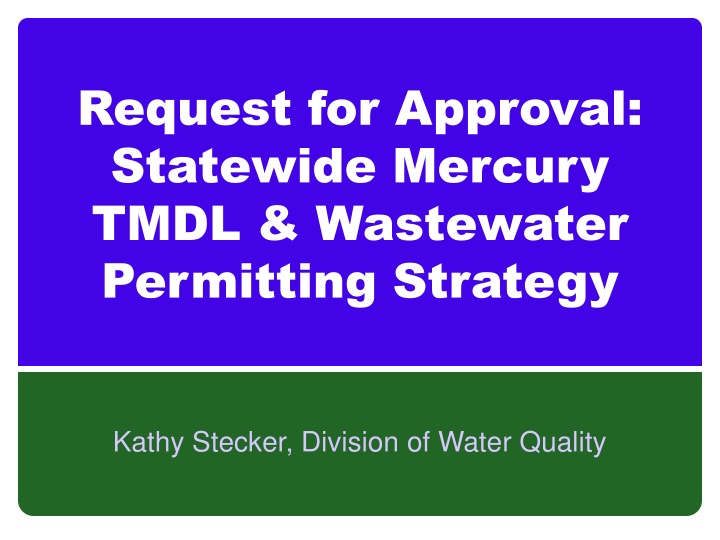

![[PDF⚡READ❤ONLINE] Planet Mercury: From Pale Pink Dot to Dynamic World (Springer](/thumb/21549/pdf-read-online-planet-mercury-from-pale-pink-dot-to-dynamic-world-springer.jpg)



